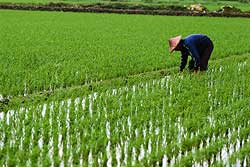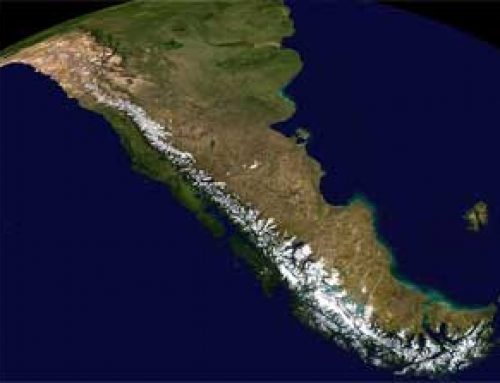
Rice paddy with a Chinese man planting rice
The Medieval Warm period
During the later Middle Ages, the climate, at least in some parts of the world, was a little warmer than usual, just by a few degrees. We call this the Medieval Warm Period. In the Americas, the warm weather may have caused the Mexica people to move south into Mexico, and the Iroquois to move north into New York State.
Medieval Europe’s climate
From Mexica to Aztec
The Iroquois move north
People also moved north in Europe, and England, France, and Germany became richer and more powerful. They conquered the south, embarked on the Crusades, and built big cathedrals out of stone. In Central Asia, warmer weather may have encouraged another wave of emigration into West Asia, China, and Europe: the Turks and the Mongols.
The Crusades
Medieval cathedrals
The Seljuk Turks
Genghis Khan and the Mongols
What is the Little Ice Age?
But around 1300 AD, the temperature worldwide – or maybe only in the northern hemisphere – seems to have gradually begun to average one or two degrees cooler. Probably the reason was a volcanic eruption that blocked sunlight. In 1257, a volcano far away in Indonesia on the island of Lombok erupted.
What causes volcanoes?
More about plate tectonics
Middle Ages Timeline
It was the most powerful eruption of the last 7,000 years. The ash from the volcano blocked sunlight even all the way on the other side of the world. One or two degrees might not seem like much, but it was enough to bring early frosts that killed the wheat and rice in China, and millions of people went hungry.
What happened when it got colder?
The Ming Dynasty government collapsed partly because people were angry that they were so hungry. In Europe, rivers froze over that didn’t usually freeze over, and glaciers moved downward from the Alps and squashed a number of mountain villages flat.
The Ming Dynasty
Medieval European food
Medieval African history
People had to eat oats and rye instead of wheat and barley. Many people froze to death because their houses were not built for this new cold weather. In Africa, as well, the Niger river repeatedly flooded the city of Timbuktu. Further south, there seems to have been a long and terrible drought. People abandoned the settlement of Great Zimbabwe.
The Little Ice Age in the Americas
The Little Ice Age also chilled North America, where the Vikings abandoned their homes in Greenland and Newfoundland. Inuit people moved south into Greenland and Labrador (near Newfoundland).
The Algonquin
The Navajo and Apache
Early Pueblo people
Mississippians
Algonquin people tried to move south along the East Coast, fighting with the Iroquois people who already lived there. The Navajo people and the Apache people left their homes in Canada and moved gradually south to Arizona, New Mexico, and Texas, fighting with the Pueblo people there. The Mississippian culture collapsed.
How long did the Little Ice Age last?
The effects of the volcano were worst in the first half of the 1300s AD, but the Little Ice Age lasted until about 1850 AD (maybe for other reasons). Even in the time of Charles Dickens, winters in London were often cold enough that the Thames River froze solid, which never happens today.
Then the weather warmed up again, apparently because the sun just got a little warmer – nobody is sure whether this was the beginning of the modern man-made global warming or not.





